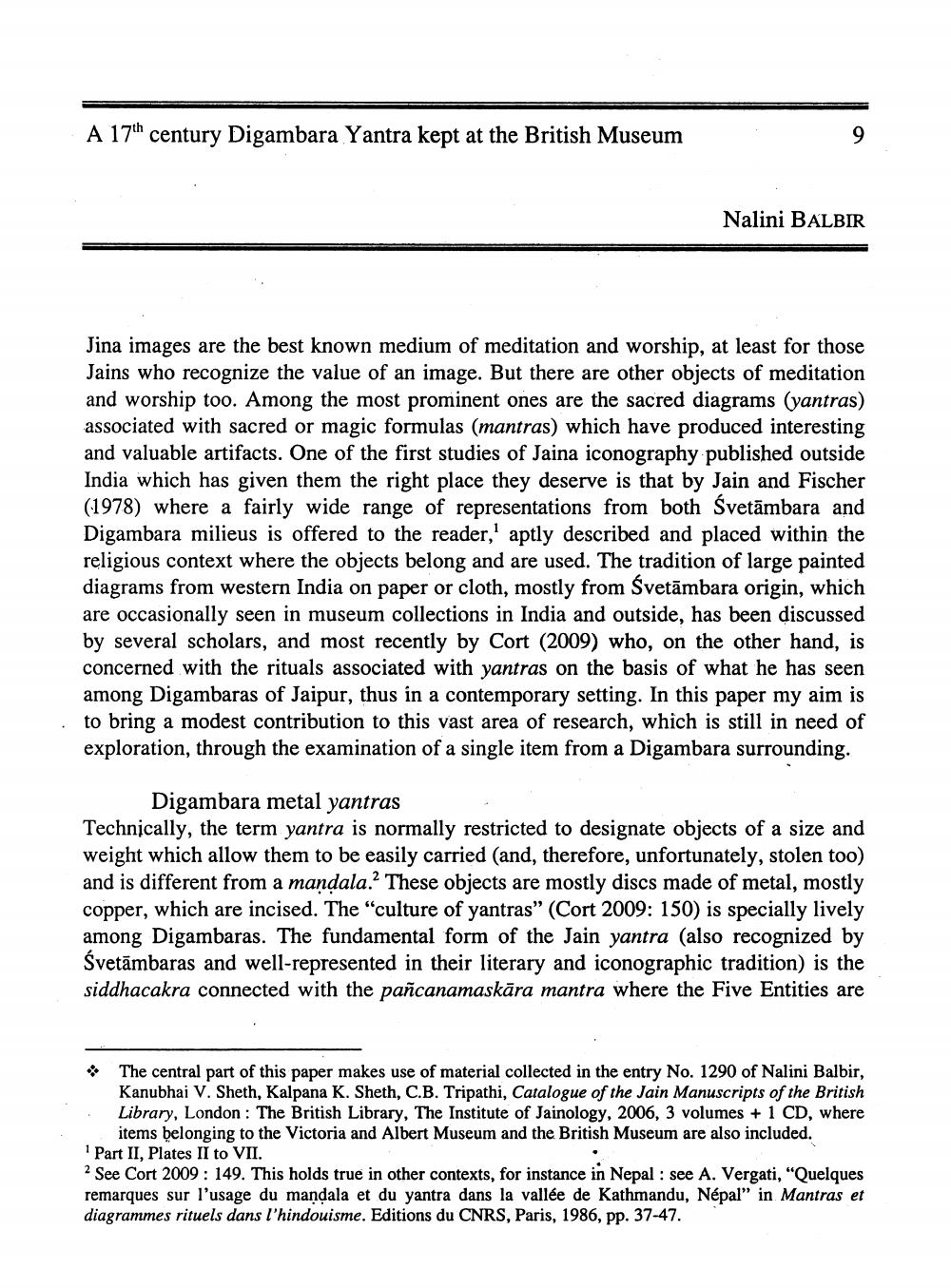________________
A 174h century Digambara Yantra kept at the British Museum
Nalini BALBIR
Jina images are the best known medium of meditation and worship, at least for those Jains who recognize the value of an image. But there are other objects of meditation and worship too. Among the most prominent ones are the sacred diagrams (yantras) associated with sacred or magic formulas (mantras) which have produced interesting and valuable artifacts. One of the first studies of Jaina iconography published outside India which has given them the right place they deserve is that by Jain and Fischer
78) where a fairly wide range of representations from both Śvetāmbara and Digambara milieus is offered to the reader,' aptly described and placed within the religious context where the objects belong and are used. The tradition of large painted diagrams from western India on paper or cloth, mostly from Svetāmbara origin, which are occasionally seen in museum collections in India and outside, has been discussed by several scholars, and most recently by Cort (2009) who, on the other hand, is concerned with the rituals associated with yantras on the basis of what he has seen among Digambaras of Jaipur, thus in a contemporary setting. In this paper my aim is to bring a modest contribution to this vast area of research, which is still in need of exploration, through the examination of a single item from a Digambara surrounding.
Digambara metal yantras Technically, the term yantra is normally restricted to designate objects of a size and weight which allow them to be easily carried (and, therefore, unfortunately, stolen too) and is different from a mandala.? These objects are mostly discs made of metal, mostly copper, which are incised. The "culture of yantras" (Cort 2009: 150) is specially lively among Digambaras. The fundamental form of the Jain yantra (also recognized by Svetāmbaras and well-represented in their literary and iconographic tradition) is the siddhacakra connected with the pañcanamaskāra mantra where the Five Entities are
The central part of this paper makes use of material collected in the entry No. 1290 of Nalini Balbir, Kanubhai V. Sheth, Kalpana K. Sheth, C.B. Tripathi, Catalogue of the Jain Manuscripts of the British Library, London: The British Library, The Institute of Jainology, 2006, 3 volumes + 1 CD, where
items belonging to the Victoria and Albert Museum and the British Museum are also included. Part II, Plates II to VII. 2 See Cort 2009 : 149. This holds true in other contexts, for instance in Nepal : see A. Vergati, "Quelques remarques sur l'usage du mandala et du yantra dans la vallée de Kathmandu, Népal" in Mantras et diagrammes rituels dans l'hindouisme. Editions du CNRS, Paris, 1986, pp. 37-47.




